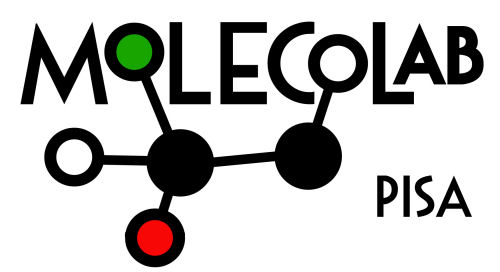The Molecolab group has a strong know-how in software development, and actively writes highly optimized code to implement the new computational approaches, analyses, and numerical methods in the field of polarizable QM/MM methods, electronic structure, photochemistry and biophysics.
We contribute to the development of several widely used quantum chemistry and molecular dynamics codes, such as Gaussian, CFOUR, NewtonX, and Tinker/TinkerHP.
We also develop in-house software to implement specific methodologies. Our software is released as open-source and can be downloaded from our GitHub page.
If you use our code, and you find it useful, please cite us following the instruction in the repository.
PolChat
Authors: S. Caprasecca, C. Curutchet and B. Mennucci
PolChat is an ESP charge-fitting tool accounting for molecular polarization through the induced-dipole model.
Theory and manual can be found at github.com/Molecolab-Pisa/polchat/blob/master/doc/PolChat.pdf.
Updated code can be found in our GitHub Page. V4.1.2
EXAT
Authors: S. Jurinovich, L. Cupellini, C.A. Guido, B. Mennucci
EXAT is a python script to compute excitonic properties of a multichromophoric system and to simulate absorption and circular dichroism spectra.
Theory and implementation details can be found in a dedicated publication [doi: 10.1002/jcc.25118]. Updated code can be found on our GitHub Page. V1.0.1
SPECDEN
Authors: L. Cupellini, L. Viani, and B. Mennucci
Python script to compute spectral densities from autocorrelation functions, and the corresponding vibronic spectrum. dx.doi.org/10.5281/zenodo.3948106
NTOBuilder
Authors: L. Cupellini, S. Caprasecca, C. A. Guido, and B. Mennucci
Python script to compute NTO orbitals and related metrics from Gaussian chk files.
It can compute NTOs from any excited-state method that gives transition density matrices (e.g. EOM-CCSD). dx.doi.org/10.5281/zenodo.3948078
IR Spect
Authors: L. Cupellini, S. Jurinovich, and B. Mennucci
Python script to extract frequencies and IR/Raman intensities from Gaussian calculations and to compute the IR spectra. dx.doi.org/10.5281/zenodo.3948059
